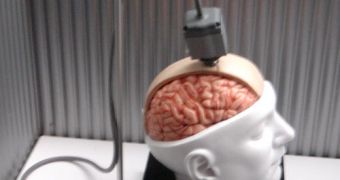Officials from the biotech company Cyberkinetics and the Department of Neuroscience at Brown University (BU) announce that a brain-computer interface (BCI) implant that they installed in a patient more than 1,000 days ago is still operational.
This is a tremendous achievement for the collaboration, which seeks to develop implantable BCI that can withstand the harsh conditions of the human body for prolonged periods of time.
Seeing how the BrainGate system was developed specifically to benefit patents with amyotrophic lateral sclerosis (ALS) or spinal cord injuries, the milestone provides a new ray of hope for people who have been confined to their wheelchairs with limited communications abilities for years.
A BrainGate device has been implanted in a woman suffering from tetraplegia, a condition that paralyzes both the limbs and the torso. Now, a little less than three years later, she can still utilize the implant as she could shortly after it was installed.
Using this system, the woman is capable of moving a cursor on a computer screen based on her neural activity alone. Scientists, engineers and technicians assessed the functionality of the device for five consecutive days around the 1,000-day anniversary.
The BrainGate interface was developed and tested jointly at the Brown University, the Providence VA Medical Center and the Massachusetts General Hospital (MGH), Science Blog reports.
“This proof of concept – that after 1,000 days a woman who has no functional use of her limbs and is unable to speak can reliably control a cursor on a computer screen using only the intended movement of her hand – is an important step for the field,” De. Leigh Hochberg explains.
The expert is a engineering associate professor at the Brown University, as well as a VA rehabilitation researcher. He also holds an appointment as a visiting associate professor of neurology at the Harvard Medical School, and is the director of the BrainGate pilot clinical trial at MGH.
Details of how the woman implanted with BrainGate handled her task during the 5-day trials were published in the March 24 online issue of the esteemed medical Journal of Neural Engineering.
“Our objective with the neural interface is to reach the level of performance of a person without a disability using a mouse,” explains BU assistant professor of engineering and VA researcher John Simeral. He is also the lead author of the new report.
“These results highlight the potential for an intracortical neural interface system to provide a person that has locked-in syndrome with reliable, continuous point-and-click control of a standard computer application,” he concludes.

 14 DAY TRIAL //
14 DAY TRIAL //